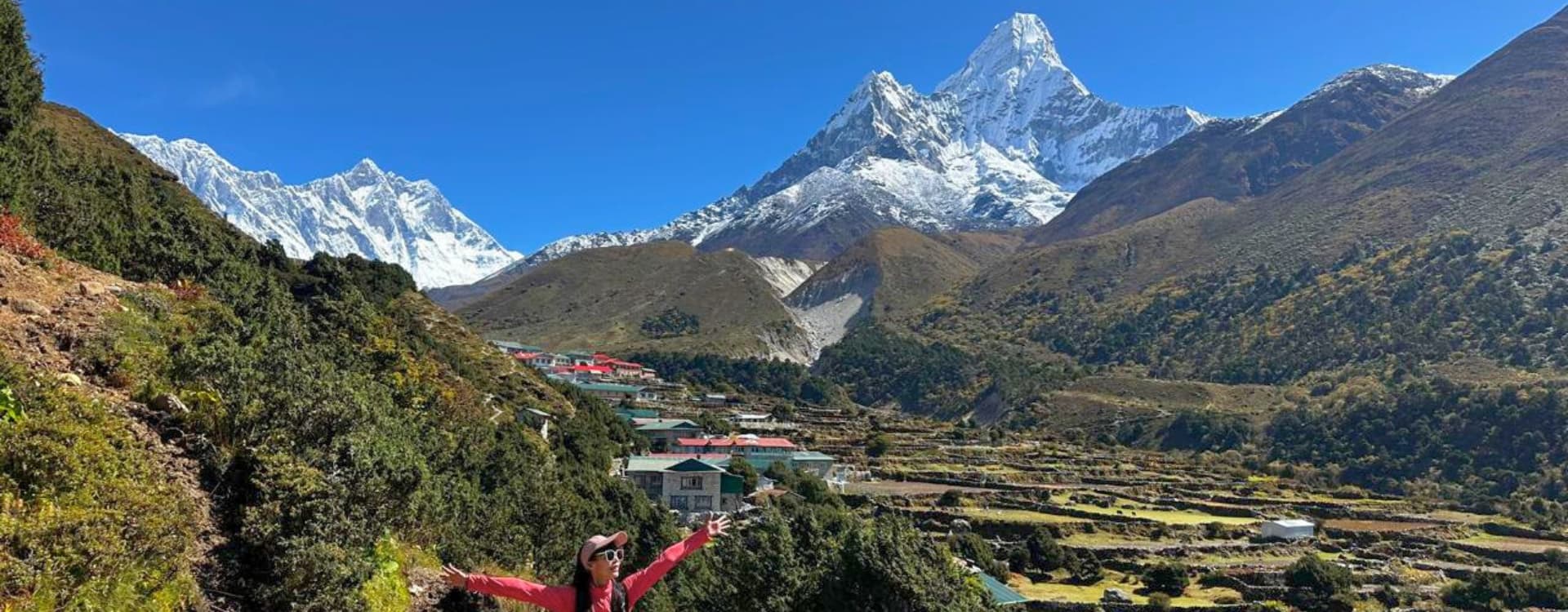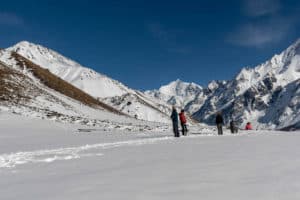Nepal is the ultimate destination for awesome adrenaline-spiking adventures in the Himalayas. Its snowy peaks offer tremendous scope for trekking and mountaineering activities for both seasoned climbers and novice beginners. Among the myriad trek destinations available in Nepal, the EBC trek is the most popular, and it is understandable why. Mount Everest (8,849m) is the world’s tallest and most magnificent peak; most trekkers venture to its base camp to glimpse the mighty mountain and marvel at its enchanting beauty. One would get the most out of their Best Time Everest Base Camp (EBC) Treks if they knew when to make this once-in-a-lifetime journey.
Season-wise, there is no doubt that spring and autumn are the best times for EBC treks, but there is more to it than just choosing the ideal seasons. Of course, these seasons will have optimum temperatures, perfect weather conditions, and whatnot. Still, one must also analyze other factors besides seasons to fully realize which season suits their preferences and time frame. For instance, the peak months from March to May and September to November, though ideal for EBC treks with favorable weather conditions, could result in overcrowding of trails and nearby attractions. Similarly, the off seasons (Jan, Feb, Jun, Jul, Aug, and Dec) may be more appealing if you prefer peaceful private treks in the Khumbu region. However, you must take extra precautions for an off-season trek to the Everest Base Camp. You must brace for the harsh climate and other impending dangers of the off-season months. We have prepared detailed information regarding the pros and cons of trekking to the EBC in each of the four seasons so that you can decide which time frame suits you best.
Spring
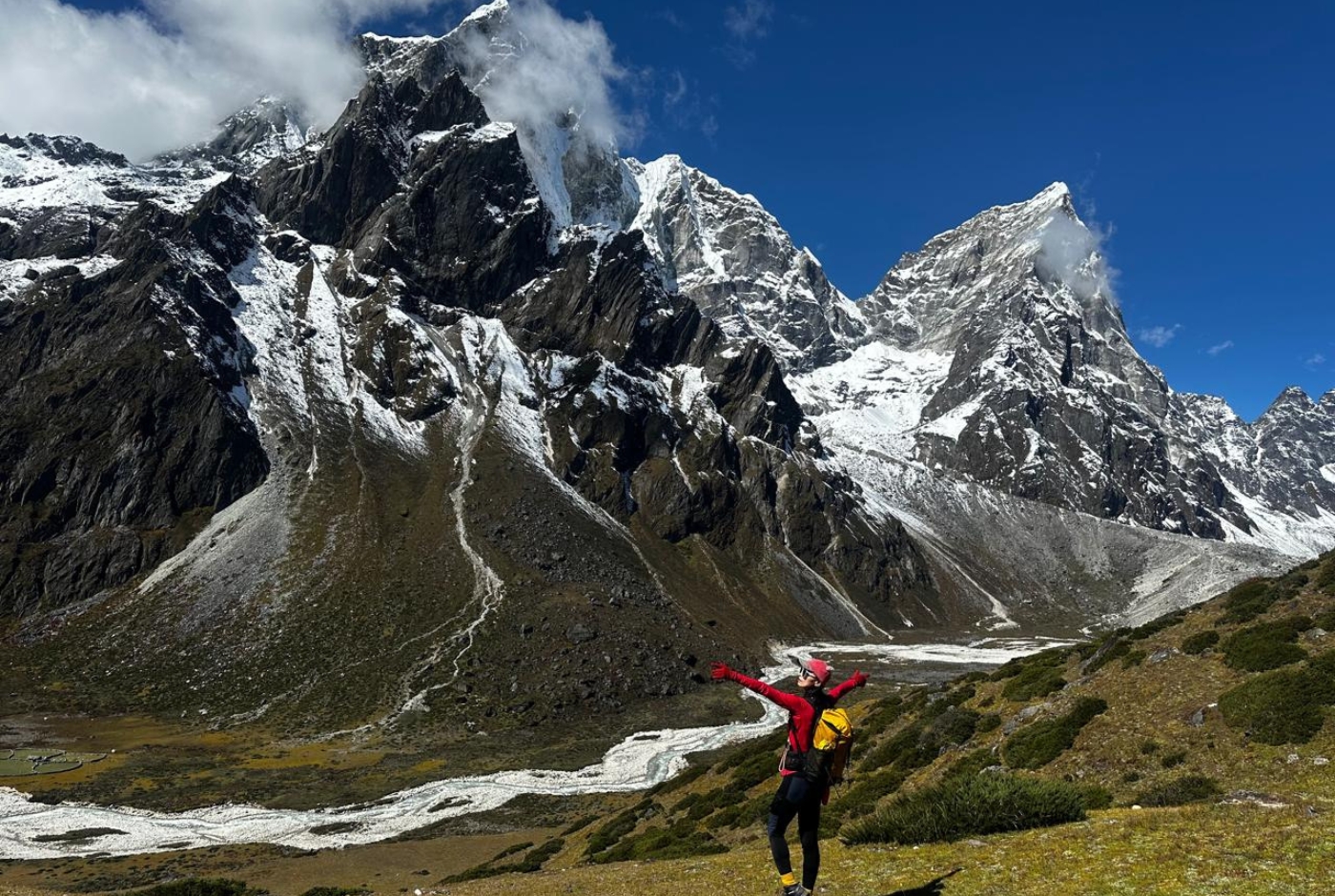
Spring is one of the ideal seasons for a thrilling adventure to Everest’s Base Camp. Beginning with March, it spans till the end of June, making these four months (March, April, May, and June) the most suitable time for the EBC trek. As the time of the year that brings in new life, the flora of the Khumbu region is in full bloom in spring, providing a vibrant backdrop on the trails. Blooming rhododendrons and lush green vegetation make a perfect spot to enjoy nature in its truest form. The beauty of Khumbu, adorned with blossoms of various hues, attracts large groups of trekkers during this season, making the serene landscape a bit crowded at times. Weather conditions during spring are the best they can get for the Best Time Everest Base Camp trek. The median daytime temperature hovers around 20 ºC, while it can get as hot as 25 ºC and as cold as -15 ºC at higher levels. Visibility increases exceptionally due to clear sunny days with minimum precipitation. Get ready to get marvelous views of Mt Everest and other Himalayan peaks on this trek!
As spring ushers in the trekking season in Nepal, tourists from all around the world arrive in Kathmandu to take part in trekking and mountaineering or to visit the many attractions of Nepal, like Lumbini, Pokhara, Chitwan, and others. EBC treks are the favorite of trekkers; it is a rare opportunity to explore Nepal’s northeastern district of Solu-Khumbu, home to the world’s highest peak, Mt Everest. It is also a chance to meet like-minded people worldwide and make lasting friendships! Spring’s moderate temperatures with little to no rainfall and excellent visibility are perfect weather conditions for mountain flights.
You can look forward to uninterrupted flights from Lukla’s Tenzing-Hillary Airport to Ramechhap’s Manthali Airport. Apart from Everest Base Camp treks and Everest expeditions, trekkers also undertake other thrilling adventures by ascending other prominent peaks of Khumbu, such as Lobuche (6,119 m), Island Peak (6,189 m), Ama Dablam (6,814 m), and so on. Thus, spring is one of the ideal seasons for the Everest Base Camp trek. Apart from being crowded, it has all the necessary features to make your EBC trek a memorable experience, bringing together nature, culture, and the unfathomable joy of hiking in the Himalayas.
Monsoon
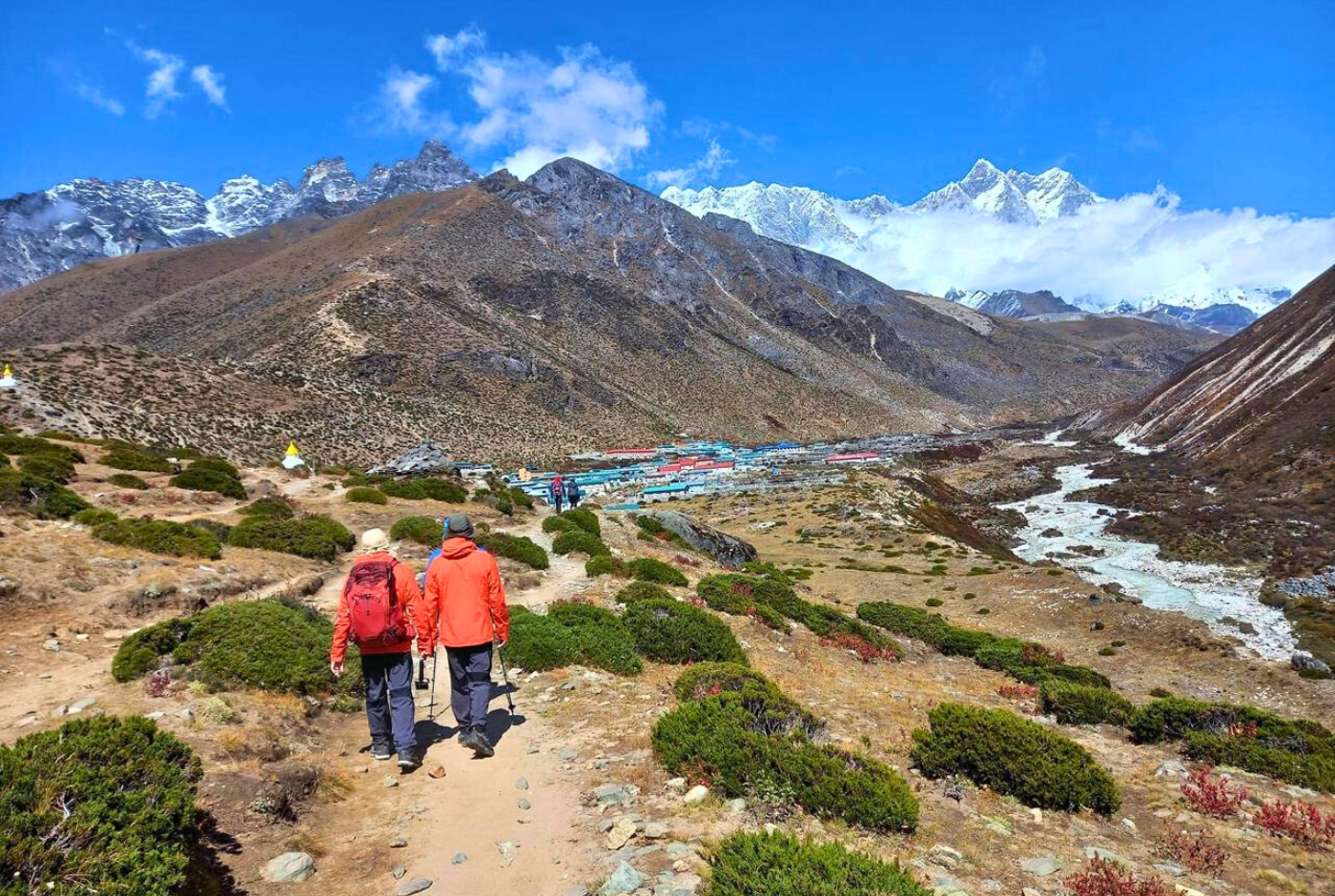
Monsoons in Nepal see incessant rainfall, making the trails leading to the Best Time for Everest Base Camp utterly slippery and adding to the difficulty of this popular trek. Muddy trails, high chances of getting drenched while trekking, and a dark, cloudy sky during most of the day make it an unfavorable time to undertake EBC treks. The monsoon season is the offseason for EBC treks. The median temperature of EBC trails during monsoon season (July, August, and the first two weeks of September) ranges between a maximum of 30 ºC and a minimum of -5 ºC. Average temperatures remain at 22 ºC. Some pros of trekking Best Time to trek to the Everest Base Camp is during this season.
- The trails are less crowded,
- Accommodations are readily available,
- They are perfect for secluded treks,
- Wildflowers adorn the landscapes, etc.
Hence, you must equip yourself with the proper gear to undertake a trekking journey to EBC during the monsoon months of July, August, and early September. With appropriate preparations and careful guidance from your trekking guide, you can still do the EBC trek this season. Besides muddy trails resulting from monsoon rains, you must also prepare for hardships due to unfavorable weather conditions. We recommend you take the necessary precautions to make your EBC journey as smooth as possible.
Pack waterproof clothing and gear, carry raincoats, extra clothing items to change into, quick-drying clothes, sturdy waterproof boots, and so on. Insect repellents may come in handy. Another inconvenience created by monsoon rains is the frequent delays and cancellations of mountain flights at Lukla Airport. Invisibility and sudden weather changes may delay your flights from Lukla to Kathmandu. We recommend you allocate some extra days while planning your EBC trip during the monsoon. This will ensure you won’t need to cancel the return flight to your home country.
Autumn
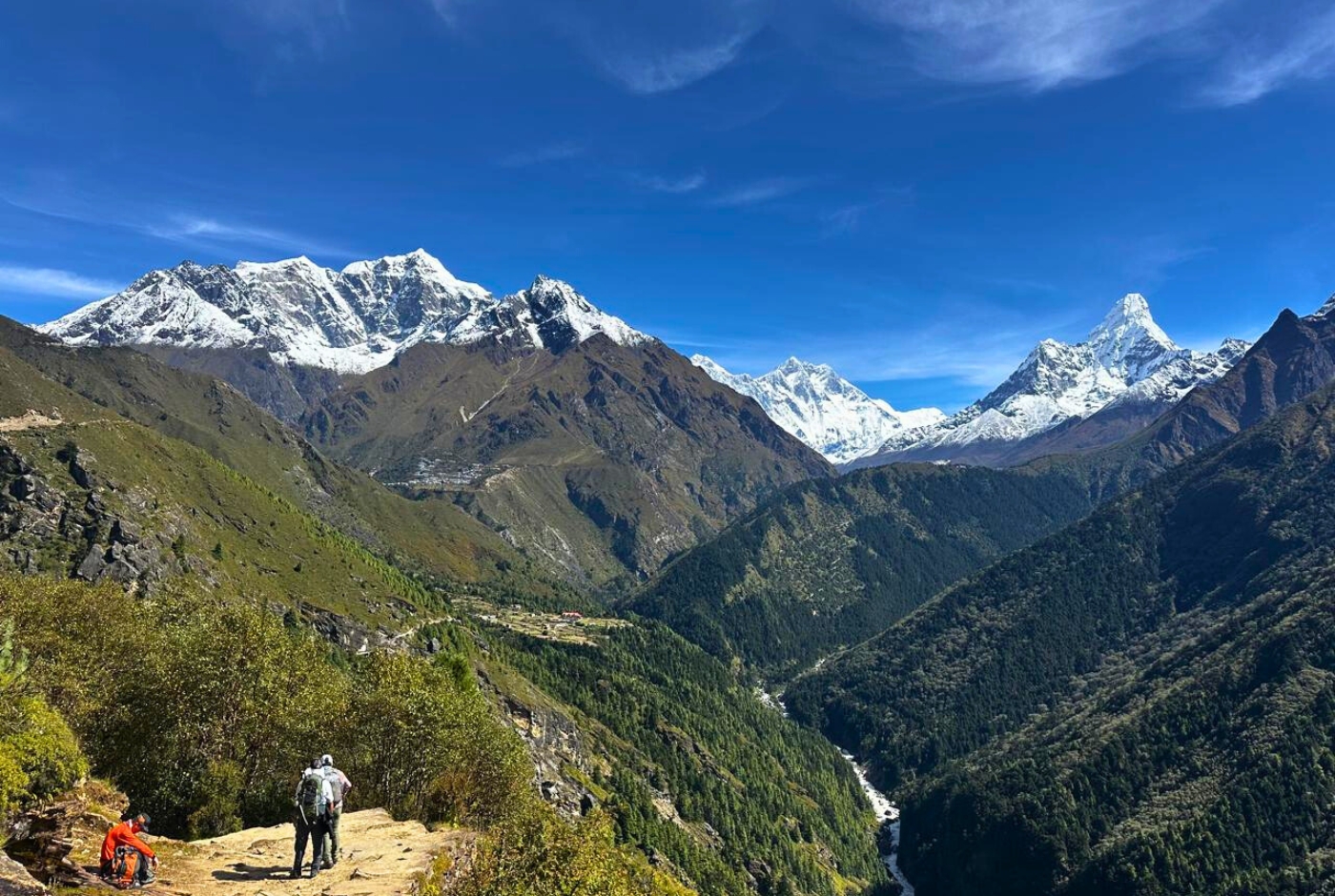
Autumn, the months of September (latter half), October, and November, have perfect weather conditions. Best Time for Everest Base Camp tours and Everest expeditions. It is one of the ideal seasons to undertake the adventurous journey to the foothills of Mt. Everest. The median temperature of 17 ºC with clear blue skies is excellent trekking conditions, ensuring spectacular Himalaya views from proximity. These months have pretty moderate temperatures, with the highest and lowest being 20 ºC and -15 ºC (on higher elevations). Crisp air, clear sky, mild temperatures, and the changing hues of Khumbu’s vegetation are some highlights of trekking to EBC in autumn.
Another equally important factor that makes autumn a popular choice for EBC treks is the occurrence of Nepal’s two major festivals in this season, i.e., Dashain (September/ October) and Tihar (September/ October). Many trekkers specifically chose autumn so that they could enjoy and participate in the cultural festivals of Nepal while visiting Everest. Witness the locals observe these festivals with complete devotion and fervor. Dashain (Vijaya Dashami) is a grand celebration of good’s triumph over evil. It is observed for 15 days, where families come together to worship the goddess Durga (a Hindu deity), enjoy lavish feasts, and experience memorable reunions. Tihar, the festival of lights, lasts for five days.
The god of death, Yama, and the goddess Laxmi (giver of wealth and prosperity) are revered during Tihar. Especially on the third day, which is called Gai Tihar/Laxmi Puja, houses, shops, and streets are lit up with lamps and elaborate decorations to usher in good fortune. Thus, visiting the Everest Base Camp during autumn will enhance your trip experience. The cultural experience will allow you to gain in-depth knowledge about the local traditions and customs.
Winter
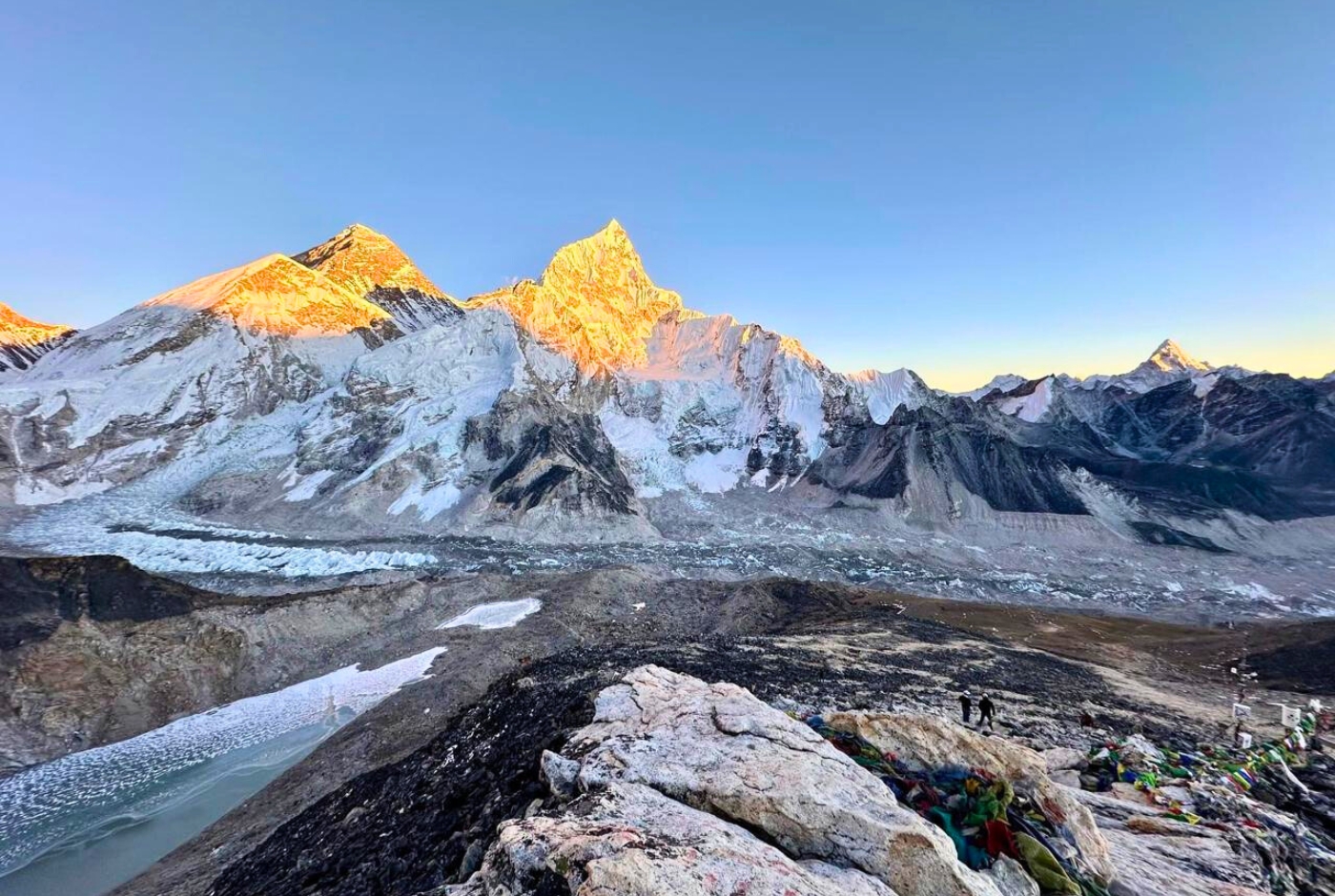
For those who seek a more challenging trekking feat, winter would be the best time for Everest Base Camp treks. Beginning in December, it lasts till the end of February. During these three months, you can witness the Khumbu region shrouded by fresh snow, making it a breathtaking sight. Freezing temperatures of a minimum of -20 ºC at night on higher grounds, with a maximum of around 10 ºC, keep the EBC trails mostly deserted. Most teahouses close for winter, leaving only a few accommodations available. So, winter is the right time if you prefer a solitary trek within pristine nature. You can enjoy a peaceful trek during the winter season, although it could sometimes get challenging.
There are a few things to prepare for your winter EBC journey. Make sure you keep updated with the weather conditions on the trails. Pack enough warm clothes for the trek, like insulated and waterproof jackets, fleece jackets and trousers, warm gloves, socks, caps, sturdy boots, etc. Teahouses provide extra winter blankets, so you can expect cozy night stays at these humble accommodations. Hence, the ideal time for Everest Base Camp Treks depends on what you want to experience from this journey.
Generally, spring and autumn are suitable for EBC treks, and monsoon and winter are typically off-season. But with proper preparations and your guide’s assistance, you can still do your trek during the offseason. You must know that peak seasons tend to attract hordes of trekkers, leading to overcrowding. If you want a bustling trekking experience, opting for peak seasons will also work for you. We recommend you analyze every aspect of each season before narrowing down on one. Doing so will ensure an optimum EBC trekking experience for you and your loved ones.
Comprehensive month-by-month temperature chart for the Everest Base Camp (EBC) trek.
| Month | Avg. Day Temp (°C) | Avg. Night Temp (°C) |
| January | -10 to -5 | -20 to -15 |
| February | -8 to -3 | -15 to -10 |
| March | -5 to 0 | -12 to -8 |
| April | 0 to 5 | -10 to -5 |
| May | 5 to 10 | -5 to 0 |
| June | 10 to 15 | 0 to 5 |
| July | 10 to 15 | 2 to 5 |
| August | 10 to 15 | 2 to 5 |
| September | 5 to 10 | 0 to 5 |
| October | 0 to 5 | -10 to -5 |
| November | -5 to 0 | -15 to -10 |
| December | -10 to -5 | -20 to -15 |
When is the best time for a less crowded Everest Base Camp Trek?
The offseason for Everest Base Camp Treks is monsoon (June, July, and August) and winter (December, January, and February). During these months, the trails of Khumbu are generally deserted, but weather conditions are unfavorable due to incessant rains and muddy trails in monsoon, and frigid temperatures in winter. Leaving aside these months, other less crowded Everest Base Camp treks can be done in March, September, and December.
Expect a gradual rise in temperatures in March; it provides mildly warm weather so you can have a pleasant walk around Khumbu without winter chills. With spring’s arrival in March, the trekking season in Nepal is ushering in trekking enthusiasts from around the globe.
September, the autumn trekking season in Nepal, brings in moderate temperatures, clear skies, and colorful vegetation. It is perfect for solitary treks to the foot of Mt Everest.
Similarly, another good time for a less crowded trek is December. Although it is the beginning of the winter season, the temperatures are still bearable if you prepare well in advance. People rarely opt for EBC treks during December as the temperature begins to drop, so you can have peaceful private treks during this time of the year, too.
Is the Everest Base Camp trek arduous?
The Everest Base Camp (EBC) trek is a moderate to strenuous level trek. It is a challenging trek covering approximately a hundred and thirty kilometers.
Key factors contributing to the trek’s difficulty are the long distances and extremely high elevations that one has to traverse for at least 12 to 14 days. You will need substantial fitness and endurance levels to easily complete your EBC Trek, as you will hike to points as high as 5,644 meters (Kala Patthar).
High altitude results in a scarcity of oxygen and presents a reduced atmospheric pressure, which could lead to altitude sickness in some people. Hence, proper acclimatization is a must for a safe EBC trek.
Which is the best month for the Everest Trek? (April - October - November)
April, October, and November are the best months for the Everest Base Camp Trek.
Optimum weather conditions, well-maintained trails, picturesque scenery (rhododendrons are in full bloom!), Clear skies altogether bring about the perfect vibe for a pleasant trek to the foot of Mt Everest. There is little to no precipitation, which enables an unobstructed view of the mighty Himalayas and their breathtaking glaciers.
During April (spring), October, and November (autumn), the trails leading to Mt Everest are filled with trekkers as these are peak seasons for both the Everest Base Camp trek and Everest Expeditions. Moderate daytime temperatures of 12 -15 ºC, clear skies, and the lively vibe on the trails all give you a fantastic trip experience.
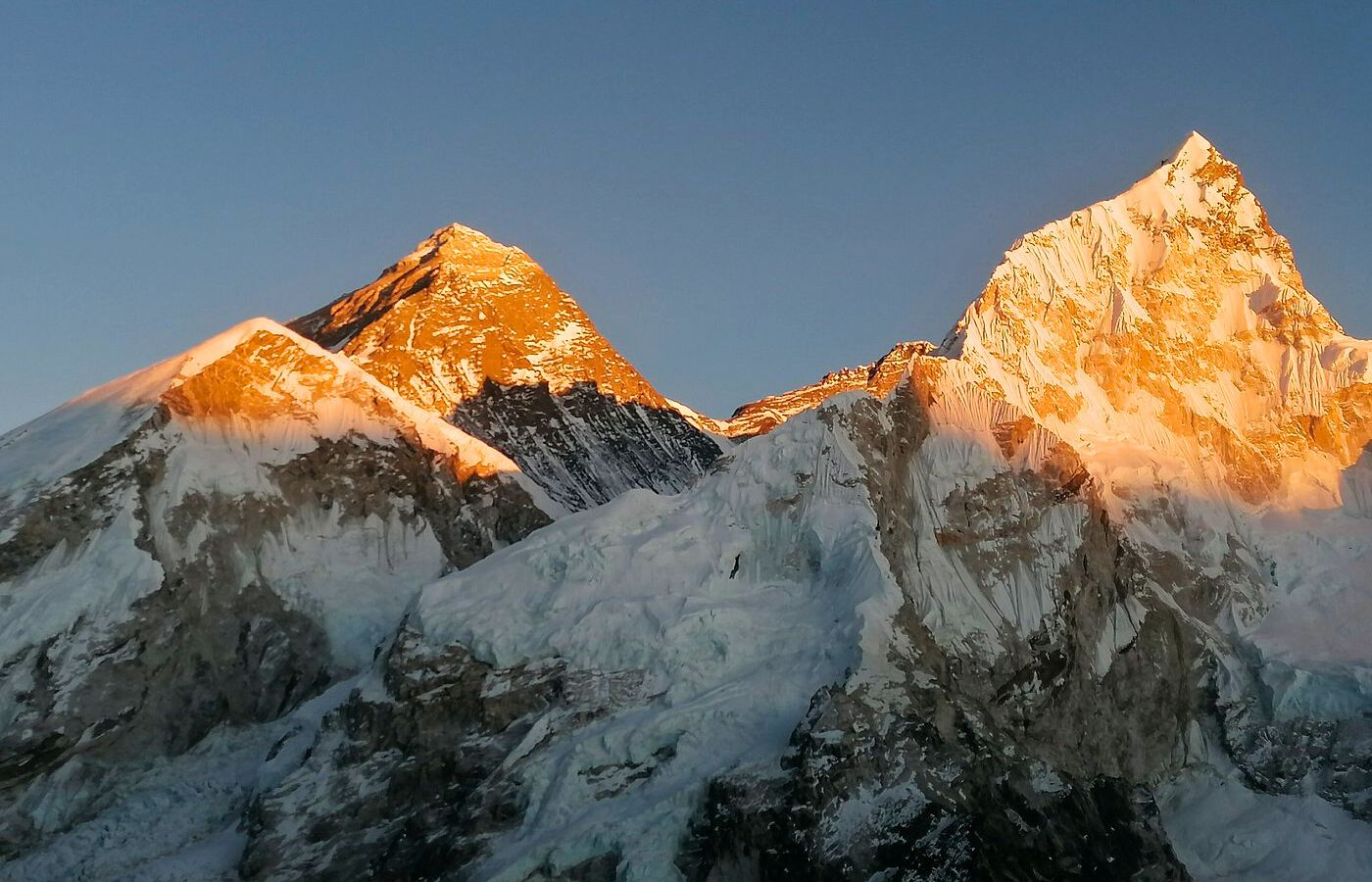
In which month do they (organizers) begin preparing for Everest expeditions?
Preparations for Everest expeditions begin as early as March. Before the arrival of the climbers, sherpas diligently carry out strenuous work like transporting equipment and supplies to camps on higher grounds, fixing the route at Khumbu Icefall, which requires placing bridges, ladders, and ropes for the climbers to cross over safely, and so on.
On the other hand, climbers also need to prepare for their Everest Expedition by doing strength, cardiovascular, and mountaineering training. Mental endurance exercises such as stress management exercises, resilience development exercises, etc., are also helpful in strengthening your mental capacity in times of distress.
About the popular festival of Khumbu - Mani Rimdu at Tengboche
Mani Rimdu is a prominent Sherpa festival. It is celebrated with full grandeur in the Khumbu region every year, either in late October or early November. It is a 19-day celebration commemorating the establishment of Buddhism in Tibet by Guru Padmasambhava in the 8th century. The festival takes place at Tengboche monastery, where, for the first 16 days, the monks perform prayers and rituals of the festival. The remaining three days are celebrated with locals of Khumbu; it mainly consists of ritualistic mask dances by the monks, prayer sessions, and festivities.
Over the years, trekkers from around the globe have also come to take part in this exuberant festival by trekking to the Everest Base Camp during this time of the year. It is a rare opportunity to catch the live cultural activities of the Sherpas, renowned for their mountaineering skills. One can add a substantial cultural dimension to their EBC trek by participating in the Mani Rimdu festival.
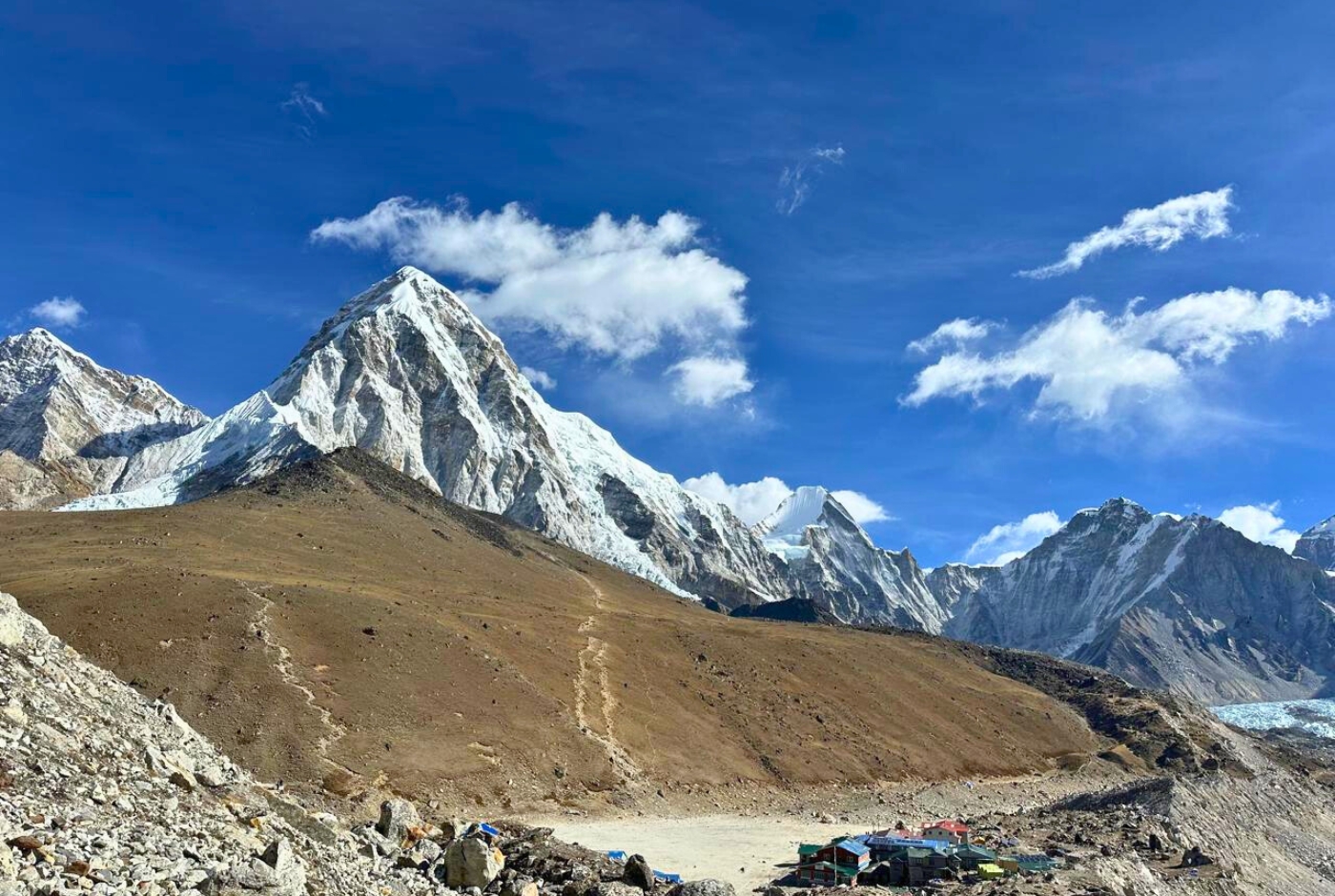
The highest marathon in the world from Everest Base Camp
In memory of Mt Everest’s first summiteers, Tenzing Norgay Sherpa and Sir Edmund Hillary, a three-category marathon from Mt Everest’s Base Camp (Khumbu Icefall - 5,356 m) to Namche Bazar (3,550 m) was first held on May 29, 1985.
Being the highest (in terms of altitude) marathon in the world, it attracts runners from around the globe. The three categories of marathons are ultra-marathon (60 kilometers), full marathon (42 kilometers), and half marathon (21 kilometers). Participants must be at least 18 years old.
The starting and ending points of the ultra and full marathon categories are the same, beginning at Khumbu Icefall and ending at Namche Bazar. Ultramarathon has several additional routes, such as Phortse (3,904 m), Nha La (4,381 m), Machhermo (4,413 m), Phortse Tenga (4,059 m), and Mongla (3,980 m).
The half-marathon begins at Dingboche and ends at Namche, following the route from Pangboche (4,012 m), Tengboche (3,868 m), Laubisasa (3,439 m), and Kyanjuma (3,650 m).
As the Everest Marathon is an extremely high-altitude race, it is mandatory to provide a medical certificate to prove that one can endure and last in the high altitudes of the Khumbu region. Moreover, runners are expected to spend enough days in Khumbu before their race to acclimate to the altitude and climate properly. Health insurance is also mandatory to cover accidents during the marathon. It must also cover emergency evacuations by helicopter.

